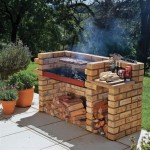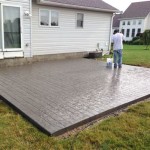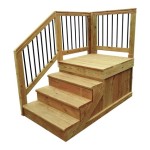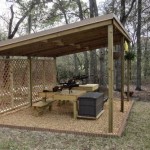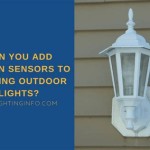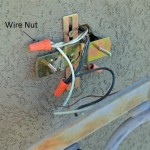Outdoor Low Voltage Lighting: A Comprehensive Guide
Outdoor low voltage lighting presents a safe, energy-efficient, and aesthetically pleasing solution for illuminating exterior spaces. Unlike traditional high voltage systems, low voltage options operate at a significantly reduced voltage, typically 12 volts, minimizing the risk of electrical shock and simplifying installation. This type of lighting is increasingly popular for residential and commercial properties, offering a versatile approach to landscape design, security enhancement, and creating inviting outdoor environments.
The core principles underpinning outdoor low voltage lighting involve a transformer that reduces the standard household voltage (120V or 240V) to a safer 12V. This lower voltage allows for easier handling of wiring, reduced insulation requirements, and the ability to use smaller gauge wires. The system comprises the transformer, low voltage cable, lighting fixtures, and connectors. Careful planning and selection of components are essential for a successful and long-lasting installation.
Understanding the Benefits of Low Voltage Lighting
The advantages of outdoor low voltage lighting extend beyond just safety. Energy efficiency is a prominent benefit. Low voltage systems often utilize LED (Light Emitting Diode) technology, which consumes significantly less power than traditional incandescent or halogen bulbs. LEDs also boast a much longer lifespan, reducing the frequency of replacements and associated maintenance costs. This leads to substantial long-term savings in energy bills and replacement expenses.
Furthermore, the flexibility offered by low voltage systems is noteworthy. Fixtures can be easily repositioned and adjusted without requiring extensive electrical work. This allows homeowners and landscape professionals to adapt the lighting design as needed, highlighting different features or creating varying ambiences. The lower voltage also means that, in many jurisdictions, homeowners can install these systems themselves without requiring a licensed electrician, provided they follow all applicable codes and guidelines.
Aesthetic considerations are also key. Low voltage lighting allows for subtle and nuanced illumination, enhancing the beauty of landscapes, architecture, and outdoor living spaces. The gentle glow of strategically placed lights can accentuate focal points, create depth and dimension, and improve the overall curb appeal of a property. The availability of a wide range of fixture styles and finishes ensures that the lighting complements the existing design aesthetic.
Key Components of a Low Voltage Lighting System
A properly functioning low voltage lighting system relies on the correct selection and installation of several key components. The transformer is the heart of the system, responsible for converting the high voltage AC power from the main electrical supply to low voltage AC power. The transformer's wattage rating must be sufficient to handle the total wattage of all the connected fixtures. Overloading the transformer can lead to overheating, reduced lifespan, and potential fire hazards.
The low voltage cable is another crucial component. It carries the electricity from the transformer to the lighting fixtures. The cable's gauge, or thickness, is critical. Thicker (lower gauge number) cables can carry more current over longer distances without significant voltage drop. Voltage drop occurs when the resistance of the cable reduces the voltage reaching the fixtures, resulting in dimmer light output. The cable gauge should be selected based on the total wattage of the fixtures and the length of the cable run.
Lighting fixtures themselves are available in a variety of styles, including path lights, spotlights, floodlights, well lights, and deck lights. The choice of fixture depends on the specific lighting application and the desired aesthetic. LED fixtures are generally preferred for their energy efficiency and long lifespan. The fixture's material (e.g., brass, copper, aluminum, plastic) influences its durability and resistance to corrosion.
Connectors are essential for joining the low voltage cable to the transformer and the lighting fixtures. Weatherproof connectors are crucial to prevent water damage and corrosion. Common types of connectors include wire nuts, crimp connectors, and gel-filled connectors. The choice of connector depends on the specific application and the installer's preference. Proper connection is critical to ensure a reliable and safe electrical connection.
Installation Best Practices for Low Voltage Lighting
Proper installation is paramount for ensuring the safety, performance, and longevity of a low voltage lighting system. The first step is to plan the layout of the lighting system, considering the desired lighting effects and the placement of fixtures. A detailed plan helps determine the required cable length, transformer wattage, and number of fixtures.
The transformer should be located in a sheltered location, such as a garage, shed, or under an eave, to protect it from the elements. It should also be accessible for maintenance and repairs. The transformer should be connected to a dedicated circuit breaker to prevent overloading the electrical system. Ensure the transformer is mounted securely and meets all applicable electrical codes.
The low voltage cable should be buried underground to protect it from damage and prevent tripping hazards. The recommended burial depth is typically 6 inches, but local codes may vary. The cable should be buried in a trench and backfilled with soil. Avoid burying the cable in areas where it could be damaged by digging or other activities. Using conduit for added protection in high-traffic areas or locations prone to digging is always advisable.
When connecting the fixtures to the cable, use weatherproof connectors to ensure a secure and watertight connection. Follow the manufacturer's instructions for connecting the fixtures and the cable. Ensure that all connections are tight and secure to prevent loose wires, which can cause electrical problems. Regularly inspect the connections and fixtures for any signs of damage or corrosion.
Before energizing the system, double-check all connections and wiring to ensure that they are correct and secure. Use a multimeter to verify that the voltage at the fixtures is within the acceptable range. If the voltage is too low, it could indicate voltage drop, which can be corrected by using a thicker gauge cable or shortening the cable run. Once the system is energized, test each fixture to ensure that it is working properly.
Regular maintenance is essential for ensuring the continued performance and safety of the low voltage lighting system. Periodically inspect the fixtures for damage and clean them to remove dirt and debris. Replace any burned-out bulbs promptly. Check the transformer for any signs of overheating or damage. Ensure that the cable is properly buried and protected from damage. By following these best practices, homeowners can enjoy the benefits of outdoor low voltage lighting for many years to come.
Selecting the appropriate wattage for the transformer is crucial. The total wattage of all the lights connected to the system should not exceed 80% of the transformer’s maximum wattage rating. This headroom allows for future expansion and prevents the transformer from overheating. It's better to err on the side of a larger transformer than one that is undersized. For example, if you plan to use ten 5-watt lights, you'll need a transformer that can handle at least 50 watts, so a 75-watt or 100-watt transformer would be suitable choices.
Consider the color temperature of the LED bulbs. Color temperature is measured in Kelvins (K) and describes the warmth or coolness of the light. Warmer colors (around 2700K-3000K) produce a soft, inviting glow and are ideal for creating a cozy ambiance. Cooler colors (around 4000K-5000K) produce a brighter, whiter light and are better suited for security lighting or illuminating pathways. Choose a color temperature that complements the surrounding landscape and architecture.
Finally, consider the beam angle of the light fixtures. Beam angle refers to the width of the light beam emitted by the fixture. Narrow beam angles are ideal for spotlighting specific features, such as statues or trees. Wider beam angles are better suited for floodlighting larger areas, such as patios or driveways. Select fixtures with beam angles that are appropriate for the intended lighting application. Adjustable beam angles offer greater flexibility and allow you to fine-tune the lighting effects.

Low Voltage Lighting Info Tips Destination Flip The Switch

Discover Our Outdoor Low Voltage Lighting For The Fall Rock Stone And Sand Yard

Low Voltage Outdoor Lighting Landscaping Network

Home Decorators Collection 30 Watt Equivalent Low Voltage Brass Led Outdoor Landscape Path Light And Spot Kit 6 Pack Kecp20 The Depot

The Benefits Of Low Voltage Led Outdoor Lighting Dusk To Dawn Stl

Low Voltage Landscape Lighting Cutting Edge Landscaping

How To Install Low Voltage Outdoor Landscape Lighting 1000bulbs Blog

Illuminate Your Deck Patio Or Garden With Low Voltage Outdoor Lighting Sposato Irrigation

High Voltage Vs Low Outdoor Lighting

Helpful Hints On Low Voltage Landscape Lighting Transformers
Related Posts

